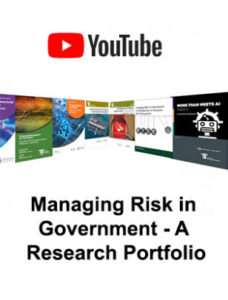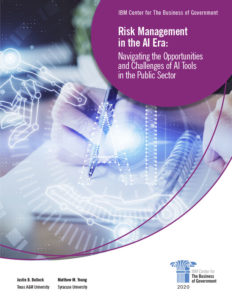Tips for Raising Risk Awareness at Your Agency
The Risk Awareness Toolkit for Federal Risk Practitioners is part of an ongoing collaboration between risk management professionals from the Enterprise Risk Management Community of Practice (ERM CoP), Association for Federal Enterprise Risk Management (AFERM), and AFERM Small Agency Community of Practice (SACoP). This document provides several tips for raising risk awareness and will expand in the future to contain examples and lessons learned from agencies’ successful risk awareness campaigns. Federal risk management practitioners are encouraged to leverage these tips and future examples, customizing them to align with their agency’s culture, norms, and other characteristics.
Download the Toolkit




 Artificial Intelligence (AI) has moved into the mainstream of businesses and government.
Artificial Intelligence (AI) has moved into the mainstream of businesses and government.